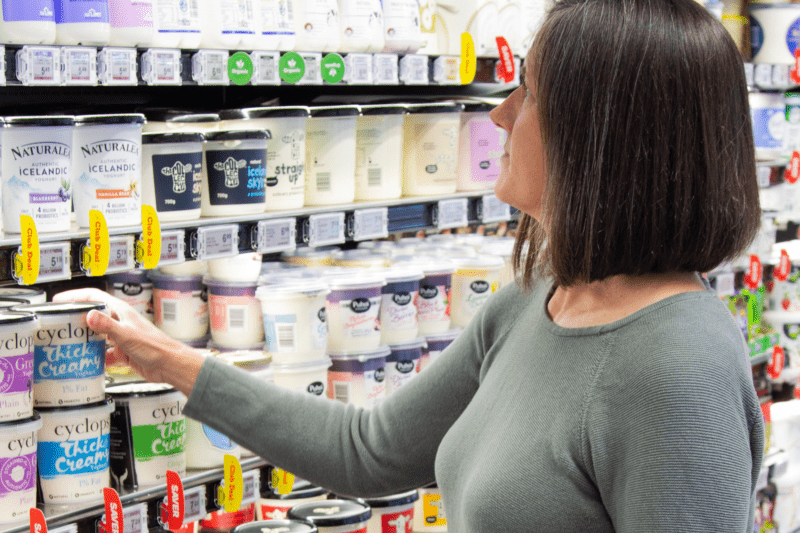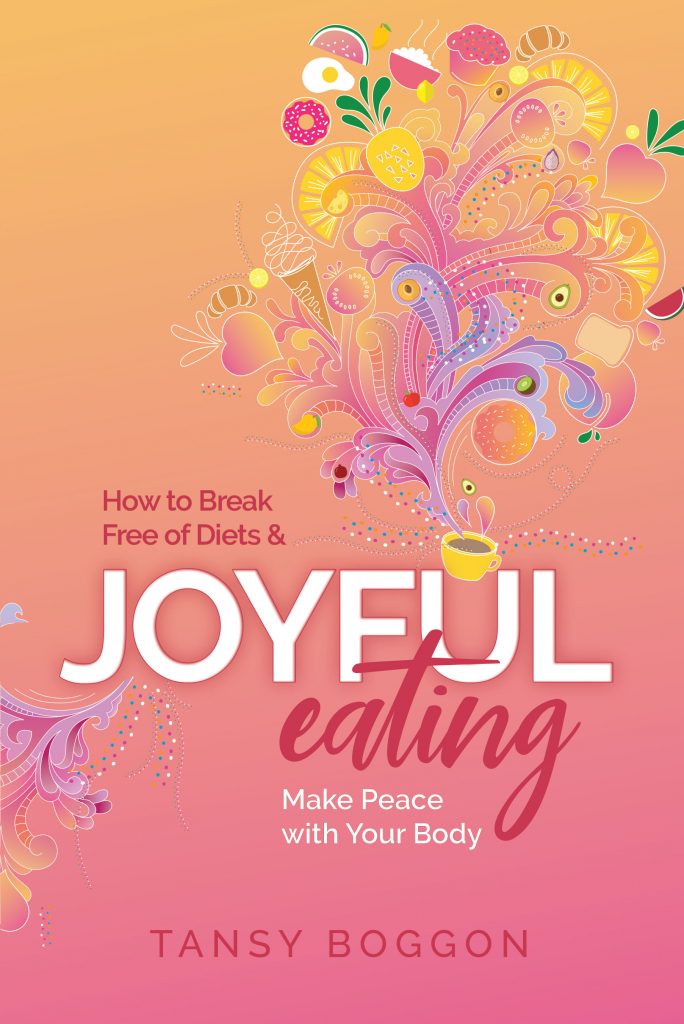The health halo effect occurs when our perception of food products leads to underestimating how much we are eating or justifying our eating choices or behaviour, whether it be eating more of a ‘healthy’ food or allowing ourselves to indulge because of ‘good’ eating.
You’ve probably done this yourself—I know I have in the past—justified eating dessert because you’ve just eaten a healthy meal. Or maybe, like me, you’ve rationalised having a second slice of cake because it is all-natural or contains nuts, vegetables or beans—they’re healthy, right?
Eating behaviour like this is what is known as the health halo effect.
What is a health halo?
The Macmillan Dictionary defines a health halo as the perception that a particular food is good for you, even when there is little or no evidence to confirm this is true.
However, even products with health benefits can have a health halo.
The health halo can extend to the perception that a food is ‘healthy’ regardless of how much is eaten—you can’t eat too much spinach, right? Well, you can. Even drinking too much water can be toxic.
No food is categorically ‘healthy’.
The quantity of said food, the entire diet an individual consumes, health conditions, medications and activity level all need to be factored into how much of a particular food is ‘healthy’.
So, for example, a product that gives the perception of being healthy because it is high in fibre or protein may not necessarily be a ‘healthier’ choice if the diet is already adequate in fibre and protein. Yes, fibre and protein are, generally speaking, ‘good’ for you, but the claim on a food label doesn’t unequivocally mean that the product is ‘healthy’ for you.
Furthermore, health claims and labelling can distract you from not-so-nutritious aspects of a product or discourage you from seeking further nutritional information—even checking out the nutrition information panel or ingredients.
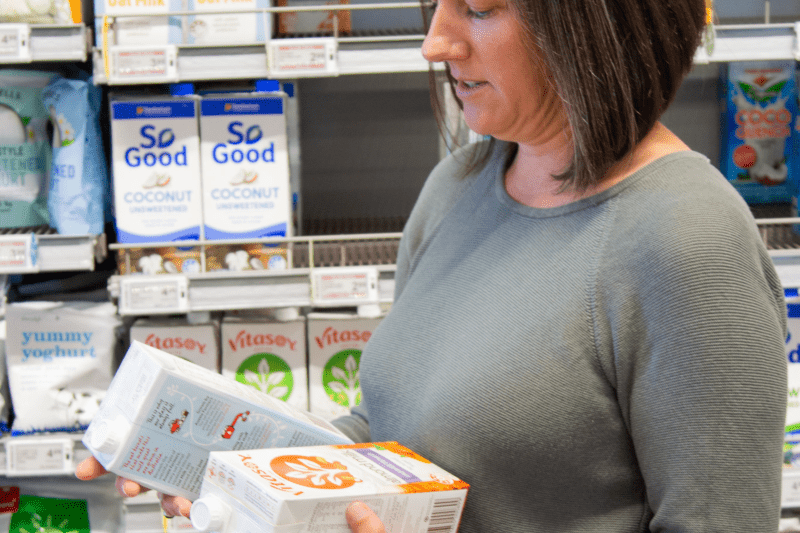
The issue with the health halo around foods and food products is how it sways our food choices and eating behaviour—known as the health halo effect.
What is the health halo effect?
The health halo effect is the tendency to choose or overconsume foods we perceive as healthy. Or justifying eating more or eating ‘bad’ because of ‘good’ food choices or eating behaviour. I can have that kidney bean chocolate cake because I ate salad for lunch.
We may think we can enjoy this ‘healthy’ dessert ‘guilt-free’. However, whether or not it is ‘healthy’ for us is not absolute but dependent on our entire diet.
We can have too much of a good thing!
How food labelling perpetuates the health halo effect
Food companies embed health terms in product names and labels, such as low-fat, all-natural, sugar-free or keto, to encourage our purchasing them and discourage further investigation into the nutrition information.
However, the health terms or claims on products may not mean a product is ‘healthier’. But do more to lead to overconsumption or underestimating how much we are eating.
For example, we may choose veggie chips over potato chips, thinking they are a healthier choice. However, the total energy, saturated fat and salt content in many veggie and potato chips are comparable. Yet the assumption that a veggie chip is healthier or has more nutrition can lead to eating them with abandon or without considering the nutrition information or guidance on serving size.
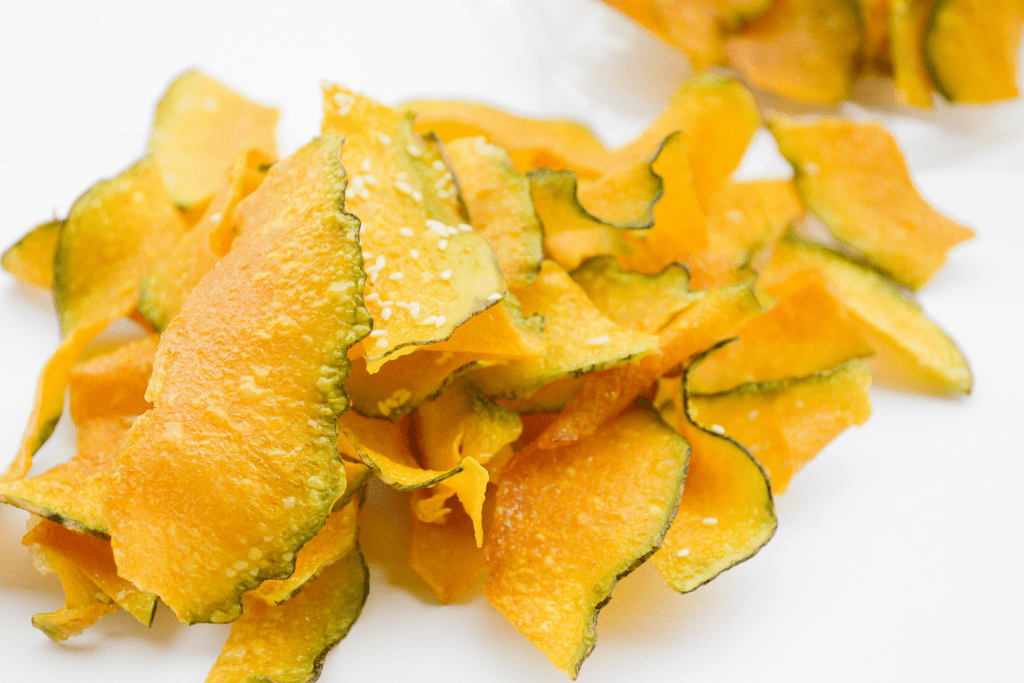
Food companies often highlight beneficial nutrients in products like ‘real’ fruit or ‘whole grain’, outshining ingredients or preparation methods that may be less nutritious, such as added sugar or refinement.
I’m not suggesting food companies are necessarily malicious. But they know what we, as consumers, are drawn to and market accordingly.
Food companies will continue to influence our food choices and eating behaviours with health claims and labelling so long as we maintain a preoccupation with weight loss and health.
Joyful Eating: How to Break Free of Diets and Make Peace with Your Body
“… practical tools to help people release their sabotaging thoughts, enabling them to eat more intuitively and find joy in the moment.”
— Michelle Stanton, author of The Timeless World.
How not to fall into the health halo trap?
We can advocate for change in product labelling and learn to ignore health claims so they don’t sway our purchases.
However, building our resilience against the health halo effect is essential to diminish the influence of health claims or being sucked into the next diet trend. We need to ditch the diet mentality.
Once we stop categorising foods as intrinsically good or bad, healthy or unhealthy and release our fear of fatness and ill health, we can form an intuitive and joyful relationship with food. Then we can eat to our hunger and fullness cues, preferences and enjoyment, not the label on the packet—that tells us what is good or bad.
Unfortunately, the bombardment of food labels and diet claims does mean we have to be savvy shoppers aware of some of these health claims.
To help you out, I briefly debunk some common health halos that potentially influence our product choices and eating behaviour. If you can think of any others or would like me to address others, let me know in the comments below.
Watch out for these health halos on food products
‘All-natural’ (or ‘real’)
Sugar, fat and salt are natural and ‘real’. Do I need to say more?
‘All-natural’ doesn’t mean a food is nutritionally dense or has health benefits. It may be free of artificial colours and flavours, but this is of little significance if the diet is nutritionally inadequate.
Just because a product contains ‘real’ fruit and vegetables, doesn’t indicate the per cent of the product that is ‘real’ or how they have been processed. For example, the fruits and vegetables may be stripped of fibre. They may be combined with sugars. Or they may simply be used as a flavour or colouring for lollies or savoury rice puffs.
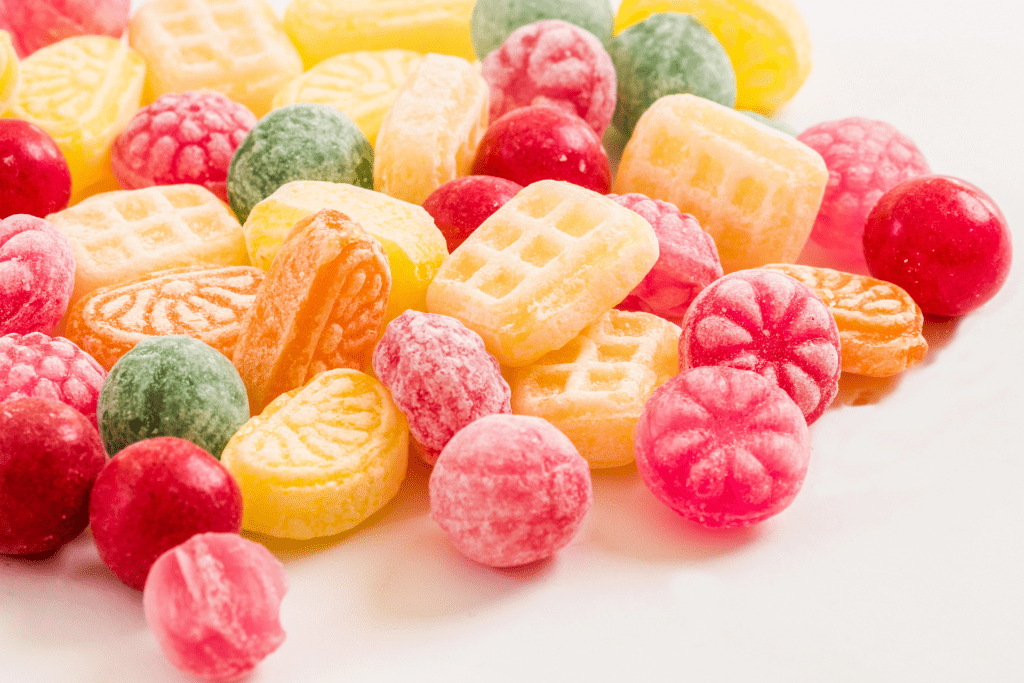
Organic
Organic foods generally mean foods that have been farmed or produced without using fertilisers, pesticides or other artificial chemicals.
You can purchase organic gummy bears made from organic sugar, starches and natural colours. Organic or not, they are still a processed and sugary snack that provides little, if any, nutritional value. Unless you’re running a marathon and need energy, maybe?
No refined sugar
Refined sugar refers to white sugar stripped of its micronutrients. Although maple syrup, agave, honey or coconut sugar are unrefined, they are simple sugars. Our body uptakes and uses them in the same way as white sugar.
Furthermore, sugar probably isn’t the best place to obtain the necessary vitamins and minerals in the diet. The nutrients in coconut sugar are inconsequential. Learn more in my blog, Sweet relief from sugar detoxing.
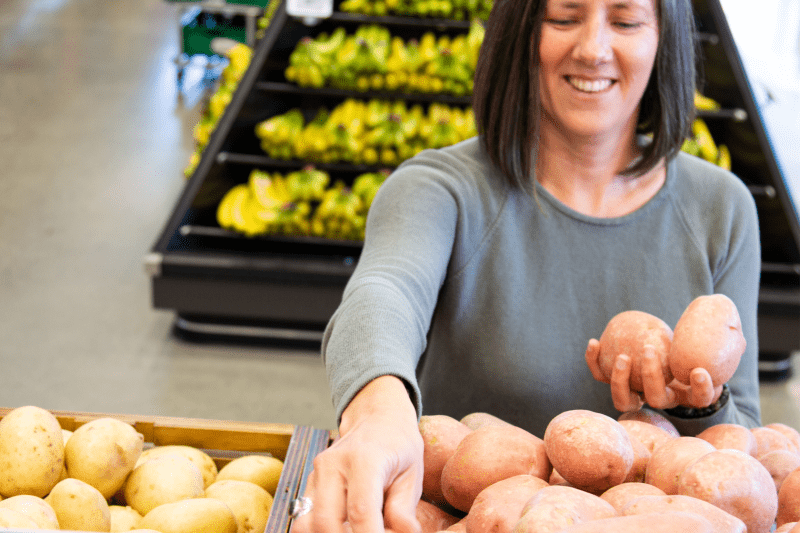
Keto and low-carb foods
Keto foods have risen in popularity on our supermarket shelves. I won’t go into why I have such concern about this, except to say that a keto product will not give you any benefits of ketosis if you aren’t following a ketogenic diet precisely—and I mean p-r-e-c-i-s-e-l-y.
Furthermore, carbohydrates have many health benefits. They provide our brain with optimal fuel—glucose—and fibres to keep us regular and nourish our gut bacteria.
Gluten-Free
If you have celiac disease, eating gluten-free foods is the healthy choice. This is because gluten can damage the lining of the small intestine and impede the absorption of nutrients. However, gluten doesn’t damage the intestine lining in other individuals.
A gluten-free diet can be low in fibre, vitamins and minerals. Furthermore, many gluten-free products can be high in sugar, saturated fat and salt, and by no means are a healthier option.
Made with whole grains
Okay, so whole grains are more nutritious than refined grains—no dispute there. However, just because the label says made with whole grains, it doesn’t specify the percentage of the product that is whole grain or the other ingredients that have been combined with the grains. It could be a whole grain product coated in sugar—a muesli bar, maybe?
Furthermore, is this product the best source of whole grains? It may be insignificant if your diet is rich in fibre.
Diary-Free
Unless you choose to be vegan or have an allergy to dairy, there is little reason to avoid all dairy. Even those with lactose intolerance can tolerate a limited consumption of dairy products, especially fermented dairy foods. Furthermore, eating small quantities of dairy, equivalent to 250mL of milk a day, can ensure the body maintains the ability to produce lactase, the enzyme that breaks down lactose.

Plant-based and vegan foods
Potato chips are plant-based. A doughnut can be made plant-based. Plant-based doesn’t automatically mean healthy.
Many vegan foods are made without any intention of being healthier. They are simply free of animal products—think, plant-based fries with gravy, plant-based layer cake or vegan jelly.
Furthermore, any diet can be taken to the extreme—following it diligently or believing it is the only way to good health. I discuss this in my blogs, Confessions of a Raw Food Diet Escapee and Orthorexia: How it’s possible to take healthy eating too far?
Baked not fried
There is a perception that ‘baked not fried’ foods are lower in saturated fat and energy than fried food. However, this is not always the case.
The label ‘baked not fried’ is unregulated and relates to the preparation method, not the fat content.
Even if a baked not fried product is lower in saturated fat, the fat content may still be high. Plus, it may contain comparable sugar and salt. It is not automatically a healthier product.

Low-fat
I probably don’t need to say much here. Low-fat, the diet trend of the 90s, is no longer trending. Most of us now know eating fat doesn’t make us fat.
Fat is an essential nutrient that supports our bodies in many ways. We require essential fatty acids in our diets, and monounsaturated fats in olive oil are health-promoting.
Despite knowing that fats are good, that label, ‘low-fat’, can draw us in and create the health halo, giving the perception that a product is healthier. However, low-fat Jell-O, is Jell-O.
The total fat content of a product is not as important as the types of fat.
Some people may want to watch their consumption of saturated fat—aka those with heart disease or high cholesterol. Transfat has health implications. But a high-fat product such as olive tapenade is not only delicious, it is nutritious.
Furthermore, low-fat doesn’t mean low calories.
Good source of protein
Food products labelled as a ‘good source of protein’ are regulated by the Australia New Zealand Food Standards Code. However, it may be that protein is added to an already protein-rich product—think yogurt—and the additional protein provides little benefit to a balanced diet.
Furthermore, how much protein you require from a yogurt or muesli bar will again depend on your entire diet. You may be paying for the hype of high protein when your diet is adequate. It may be an unnecessary expense if you are obtaining sufficient protein from foods such as legumes, eggs and meat.
Supermarket health food aisle doesn’t mean a free pass on foods
Many foods in the supermarket’s health food aisle are specially formulated for people with allergies or health conditions such as high cholesterol or diabetes. The foods are not necessarily more nutritious. They provide an alternative for those who have to avoid certain ingredients—think sugar-free lollies, gluten-free chocolate biscuits or vegan marshmallows.
Whole foods abound throughout the entire supermarket. The health food aisle is not always the best place for ‘healthy’ foods. It most definitely doesn’t deserve a free pass in our diet.
Download the FREE Chapter: Debunk the Diet Myth
Discover the physiological and psychological reasons why diets don’t work, whether for weight loss or a wellness diet that promises ‘optimal health’.
Joyful Eating: How to Break Free of Diets and Make Peace with Your Body
How to avoid the health halo effect?
Firstly, I want to clarify that there is nothing wrong with eating ‘all-natural’ veggie chips or gluten-free cereal. I enjoy these products occasionally.
It is not that the products are the problem or the cause of the health halo effect.
What causes the health halo effect is our perception that a food is healthy, elevating one food while demonising another, and the food choices and eating behaviour that results. The health halo effect occurs when we think we are eating healthier by choosing a particular product or we feel we need a treat for eating healthy.
In some respects, it’s not the health claims on products or diets that is the issue—although a contributing factor.
The problem is our perception that a food is healthier and the eating that results from this belief. So that we eat with abandon, without consideration of the nutrition information or guidance on serving size.
I don’t normally consider serving size or recommend eating to the serving size on packages. However, it can be interesting to compare products. Because a label may say ‘less than 5 g fat per serve’, but a serving is minuscule.
When I investigated veggie chips, it surprised me that most had serving sizes less than potato chips, giving the illusion they were lower in calories. Deceptive, huh?
Then there is the ingredient list to consider, which is my preferred source of information on a product label.
Although a product may be high in sugar, the ingredient list gives the best indication of the source of sugar—whether it is whole fruits or simple sugar sources.
Break free of the diet mentality and the health halo effect
I hope the information I have provided here will diminish the effect of health halos of certain foods and diets.
It is my belief that all food ought to be enjoyed guilt-free, not just foods perceived as ‘good’ or ‘healthy’. I don’t mean that we eat food without consideration of its nutritional value. However, food labels and rules cause us to eat based on what we think is ‘good’ or ‘bad’, not with a focus on our body’s internal cues. When we learn to listen to and trust our bodies, we can make choices and eat what feels good to our bodies rather than be swayed by diet claims.

